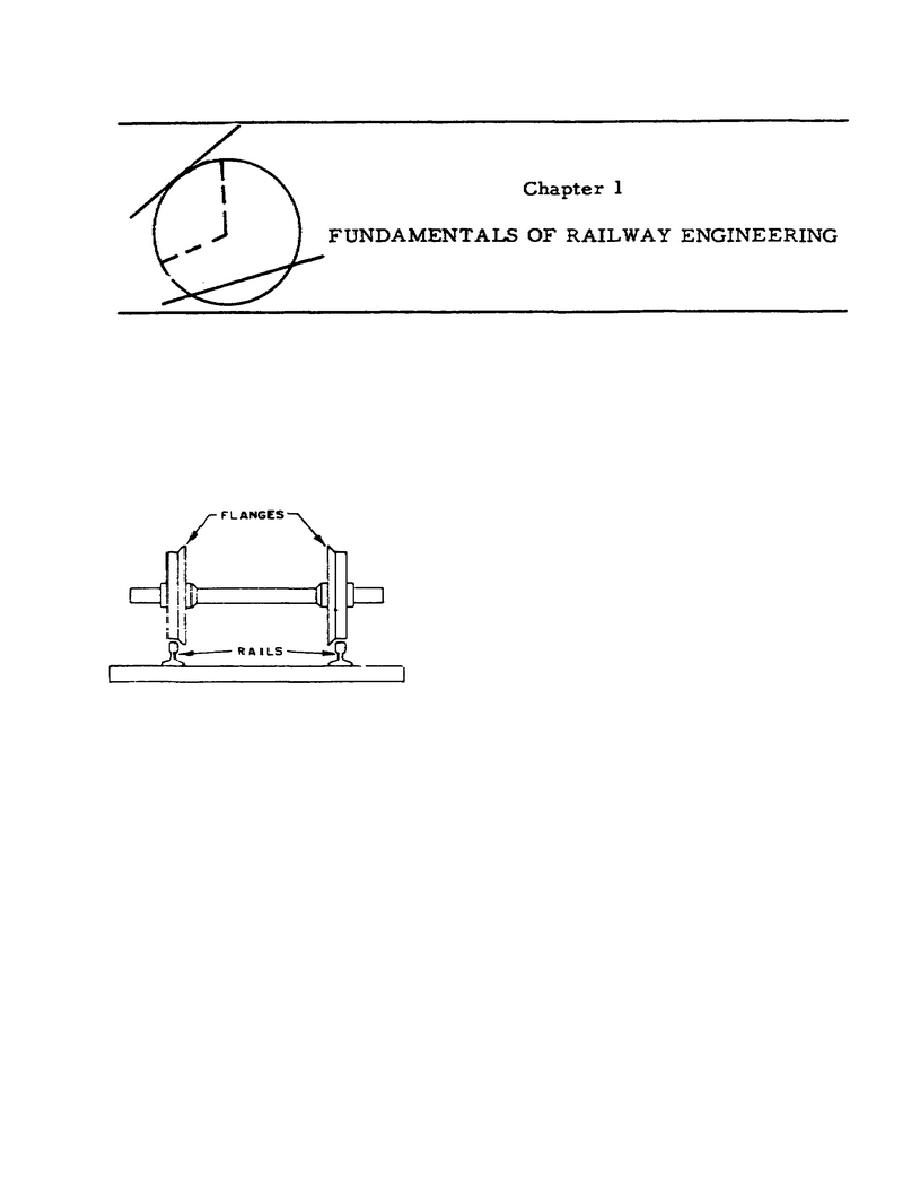
1.1.
GENERAL
Through gravity, friction, and inertia, our physical environment imposes certain
limitations on movement. To effect movement, these forces must be overcome by the
expenditure of energy. The various modes of transport have been developed to overcome these
restrictions in different ways. Each mode has its individual characteristics. Those of railroads
enable them to move large numbers of persons and great quantities of freight between any two
points on the rail line with comparative ease and
high speed. Railroads are able to do this because
they employ cars rolling on flanged wheels over
steel rails. These two elements, flanged wheels and
steel rails, as shown in the sketch, are the essential
elements of rail transportation. A student of any
phase of railroading must thoroughly understand the
characteristics of railways resulting from the use of
rails and flanged wheels.
Chapter 1 discusses the fundamentals of railroad engineering. In it you study how the
railroads meet operational difficulties presented by the terrain over which they travel. And you
become familiar with such terms as grade, alinement, profile, gage, cross level, surface, and track
clearance; and their relationship to railroad engineering and to the job of the track supervisor.
1.2.
MEETING OPERATIONAL PROBLEMS
A set of flanged wheels rolling on two steel rails is guided along the path of those rails
and does not have to be steered. A number of cars supported by these wheels can, therefore, be
grouped to form a train and be operated as a unit by one crew. Not only does such an operation
reduce labor requirements but also enables railroads to use large, efficient prime movers--
locomotives--to move the groups of cars rather than less efficient individual power units applied
to each car.
3



 Previous Page
Previous Page
